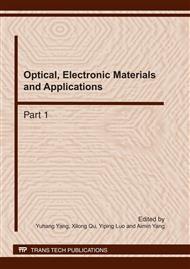p.1
p.6
p.11
p.16
p.21
p.25
p.29
Research on Folding Ripple in Shaftless Reform of Printing Machine
Abstract:
With the development of numerically control and digital drive, it is a trend to put the Electronic Line-Shaft (ELS) technology into printing machine instead of the Mechanical Line-Shafting (MLS). After the shaftless reform of a printing machine for a factory, it was found that the printing accuracy and speed of most printing units was improved observably except the folding ripple. The paper analyzes the formation reason of folding ripple and the different characteristics between ELS and MLS. The research result shows that also there are many advantages in using ELS the synchronous capability is less than MLS when a periodic disturbance act on them under the same transmission stiffness. Therefore it is proposed that the AC motors must connect directly to the main printing roller to decrease the periodic disturbance and to increase the stiffness during the shaftless reform of printing machine.
Info:
Periodical:
Pages:
11-15
Citation:
Online since:
March 2011
Authors:
Price:
Сopyright:
© 2011 Trans Tech Publications Ltd. All Rights Reserved
Share:
Citation:


